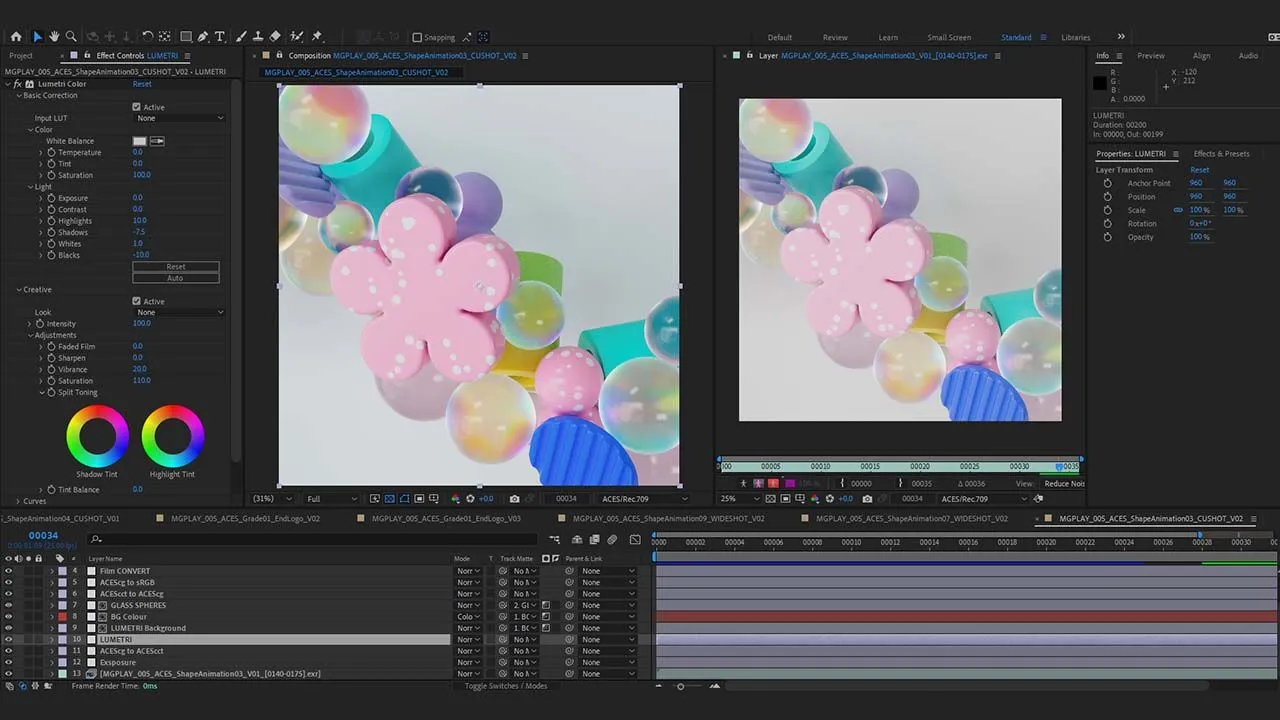Curiousity is something we naturally value at MightyGiant; this was a project with a heavy grounding in R&D.
We’re always looking into ways to boost our workflow processes whilst maintaining or better yet, improving the quality of our work. The nature of our work means colour and shape are significant factors in our projects. Based on some ongoing team discussions we decided to set ourselves a project that had a clear objective. Leveraging the ACES colour system and integrating EXRs into our workflow. A lot of capital letters we appreciate. You don’t need to fully understand all those…the main thing is the goal. To streamline the journey from 3D creation into post-production, enhancing efficiency and simultaneously exploring the potential of ACES to elevate our visual output.
This behind the scenes beneath explains a bit more about the project.
EXR’s and PNG’s are simply file types. Different ways of storing images. We use sequences of these to make up animations. There are differences in size and quality between them, and that’s part of what we set out to explore.
We have been debating about moving from PNGs to EXRs for a while. Our concern was a move to EXRs would result in large file sizes in comparison to PNGs. With that we could slow down our workflow, and end up with sluggish performance when we needed to preview our work. PNGs always seemed to win over, especially when we would only have minor tweaks in the final grade.
Now though, EXRs have compression options bringing file sizes down to the same, if not smaller than PNGs, but still allowing for vastly more control in post. This delivers a considerably faster pipeline (PNGs being some of the slowest by a huge gap). It seemed a no brainer to explore.
With EXRs it seemed a perfect time to set the team a challenge to also look into ACES. Especially now Cinema 4D, Redshift and After Effects have integrated the ACES system.
ACES (Academy Colour Encoding System) is fast becoming the industry standard for managing colour space in the film and VFX industries. It’s a grading system that is present throughout the production and post production of a project. With its much larger colour gamut and high dynamic range, it creates a consistent colour reproduction across devices and workflows. In short, it enables artist’s vastly more control over the colours. Having the 3D and post team working in this synced and uniformed way, allows us more room for refining, perfecting and taking the visual quality plus output, to the next level for the client.
We’re always looking to experiment (check our Play page out for me). Now the task was set, to create a fun and vibrant visual whilst establishing a proficient ACES and EXR workflow

On many projects, even the smallest details might need tweaking. Lighting and textures in 3D software can affect colour. When a brand demands the colour to match, we now have this flexibility. We had this recently on a project for a well known games company (that uses symbols on it’s controllers!). Matching these colours was key, and this technique allowed us to do this.
This R&D project refined our workflow by streamlining the 3D to Post production process, and maintained the quality of the animation. Consequently the efficiencies gained using this method would only increase the productivity for the final delivery to the client, which can only be a win win for all. Now that there’s a tried and tested workflow in place, we’ll definitely be exploring this system more and seeing if there’s any more developments to be gained.